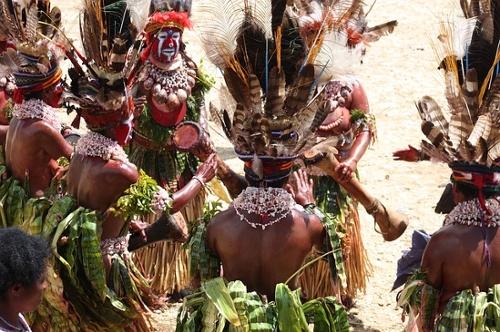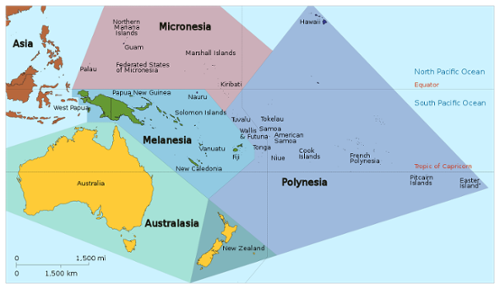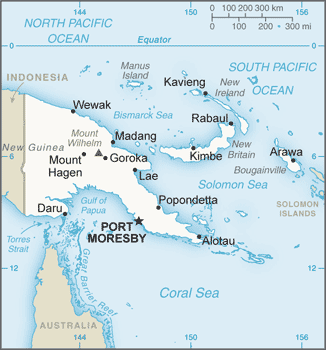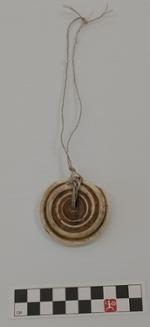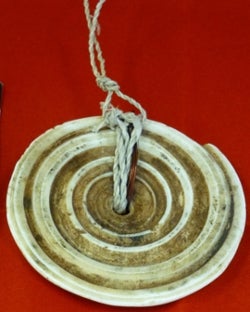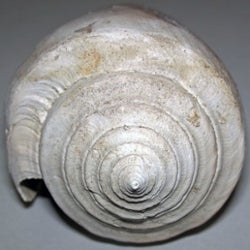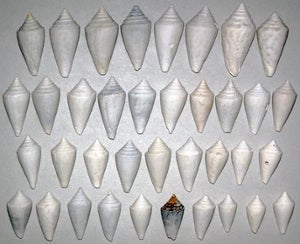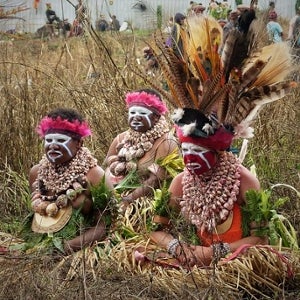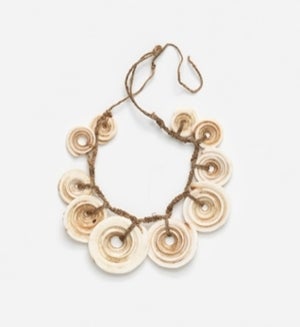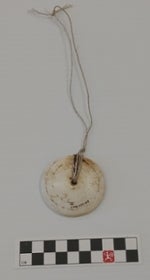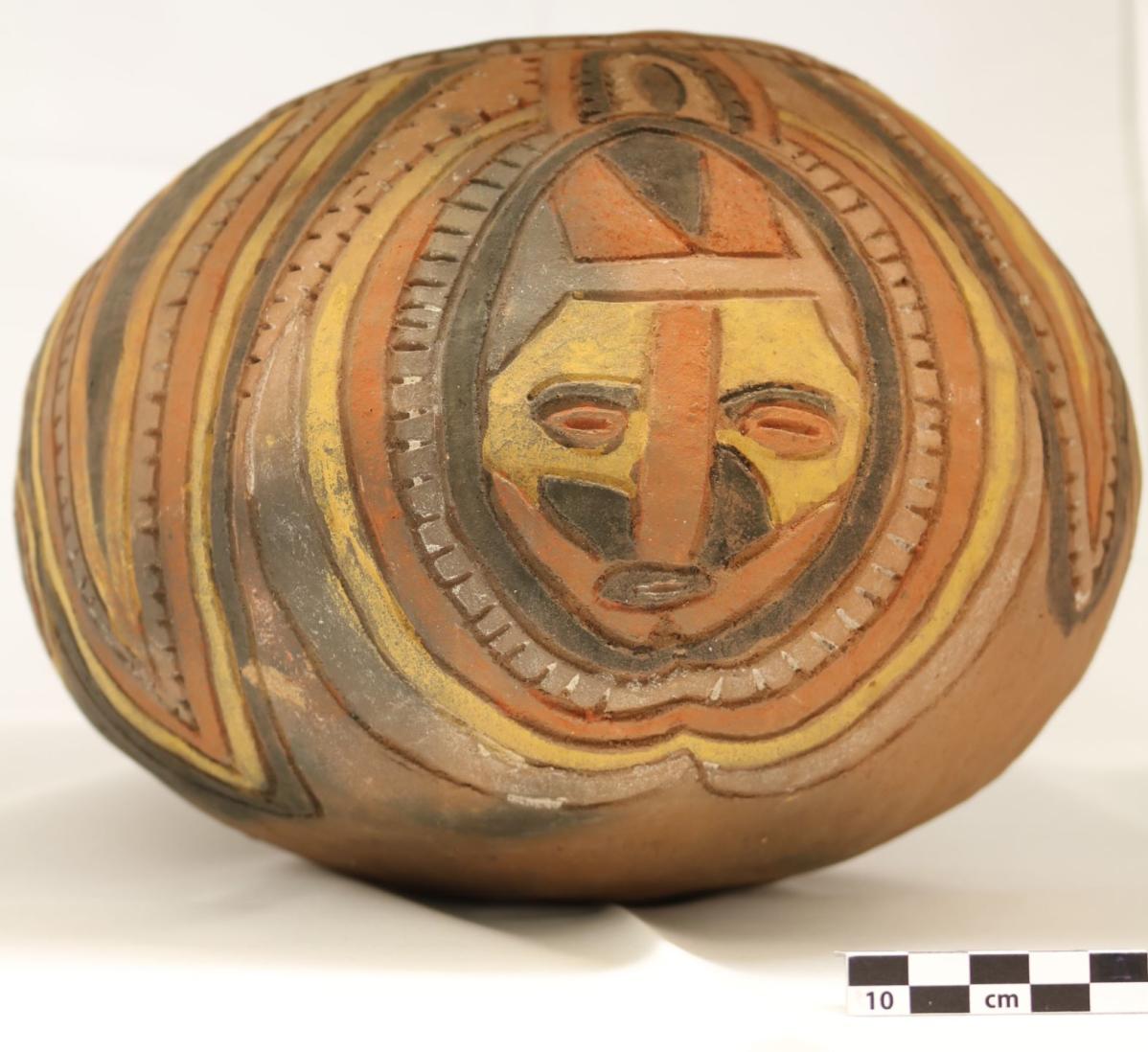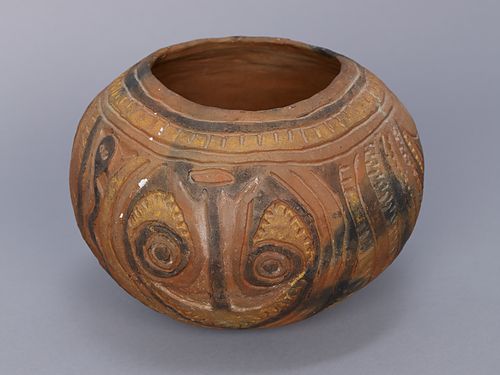Accession Number: E-998-023-003
Length (including cord): 21cm, Width: 6cm, Thickness: 1cm
Research by Camille Yabut, Spring semester 2020
Originating from Papua New Guinea, this necklace is just one of many made from the shells of a cone snail. Due to the abundance of shells, jewelry made from shells is worn all over Oceania. Shell necklaces are commonly worn by men but may also be worn by women and children.
This specific necklace is made from the shell of a cone snail. Cone snail shells, otherwise known as conus shells, are a material commonly used in the jewelry of Papua New Guinea. The large range of shapes and sizes of cone snails allow for a large variety of pendants.
Left: Spirals of a fossilized cone snail shell. Right: A variety of cone snail shells, both fossilized and not (photos by James St. John, Licensed under the Creative Commons Attribution 2.0 Generic, Flickr)
Shells also hold symbolic notations in Papua New Guinea. They are seen as a representation of culture and wealth, displaying the “status and achievements of their wearers” (Stewart and Strathern 2002, 137). Also, shells are traded amongst different groups and are a physical representation of the “ties and pathways of relationships between people” (ibid).
A young girl in Papua New Guinea wearing a shell necklace, much like the one in our collection (photo by John LeRoy, UC San Diego Library)
Many pendants showcase the natural beauty of the shells themselves. However, there are many different ways shells have been made into pendants. Some may be designed to be flat, much like the one in our collection. While others can be found painted, engraved or simply left as they are to showcase their natural colour and beauty. It is known that the delicate engravings and/or shaping were indicative of the fact that shell ornaments were valued artifacts (Ambrose et al. 2012, 121). Shell pendants often arose from a tedious shaping process. Shells are often “pounded and ground” (Lewis 1929, 10) into the desired shape with stones of various sizes and textures.
A variety of shell necklaces being worn during a sing-sing (photo by Gail Hampshire, Licensed under the Creative Commons Attribution 2.0 Generic, Flickr)
Shell necklaces are often used as decoration, most often by men, around their necks for everyday use or during ceremonial occasions, such as a sing-sing, a traditional ritual dance that is often performed as a customary welcome for guests (Maeir 2015, 27).
Another important ceremony where shell necklaces are worn are malanggan feasts, a mortuary ceremony where the life of a deceased member of the community is honoured (Craig et al. 2015, 174). While there is no one singular definition for a malanggan, it is important to note that malanggan refers to “both certain ceremonial gatherings and for the carvings used in them” (Billings and Peterson 1967, 26). During malanggan ceremonies, along with festivities, “exchanges of shell currency” (ibid) are also featured with other gifts that may be exchanged and the “various ritual events [that are] added” (Billings and Peterson 1967, 27)
An example of a shell necklace deemed part of the “complex and heavily decorated” variety
(National Gallery of Victoria, Melbourne)
Often, the more complex and heavily decorated necklaces belonged to those of higher status. These shells and pendants may also be used as a currency for exchange to purchase food, labor, and different crops (Stewart and Strathern 12002, 39). Shells, including but not restricted to cone shells, held monetary and exchange value.
Shell money was often came in the “form of small disks” (Lewis 9), much like the pendant in our collection, but smaller shells often came “arranged in strings” (Lewis 1929, 9). Their value as an exchange object draws importance in the fact that shells are worn and exchanged with others to “create relationships…and ultimately lead to further exchanges” (Stewart and Strathern 2002, 138). While shell currency is not as widely used as it once was, shells are still “used variously as forms of bodily adornment[s]” (Stewart and Strathern 2002, 141) such as, and not limited to, necklace pendants, “attached to the ears and ringlets of hair” (ibid).
I find there is such an indescribable beauty in the simplicity of this pendant. While I initially chose to do research on this necklace for its aesthetics, I was surprised to learn how much meaning such an ordinary object could hold. Upon first glance, one might glance over its simplicity and turn to a more heavily decorated pendant. I admit I was the same, however, after being given the opportunity to handle the pendant I was able to see the swirled indentations that were once hidden. I believe that a similar viewpoint can be said about the necklace. Despite its simplicity, it holds so much beauty and meaning that one might not be able to see upon first glance.
References
- Ambrose, Wal, et al. 2012. “Engraved Prehistoric Conus Shell Valuables from Southeastern Papua New Guinea: Their Antiquity, Motifs and Distribution.” Archaeology in Oceania, vol. 47(3):113-132.
- Billings, Dorothy K., and Nicolas Peterson. 1967. “Malanggan and Memai in New Ireland.” Oceania, vol. 38(1): 24-32.
- Craig, Barry, et al. 2015. War Trophies or Curios? The War Museum Collection in Museum Victoria 1915-1920. Museum Victoria Publishing, Melbourne, Australia.
- Lewis, Albert B. 1929. “Melanesian Shell Money: In Field Museum Collections.” Publications of the Field Museum of Natural History. Anthropological Series, vol. 19(1): i-36.
- Maeir, Aren M. 2015. “A Feast in Papua New Guinea.” Near Eastern Archaeology, vol. 78(1): 26-34.
- Stewart, Pamela J., and Andrew Strathern. 2002. “Transformations of Monetary Symbols: in the Highlands of Papua New Guinea.” L’Homme, no. 162: 137-156.
